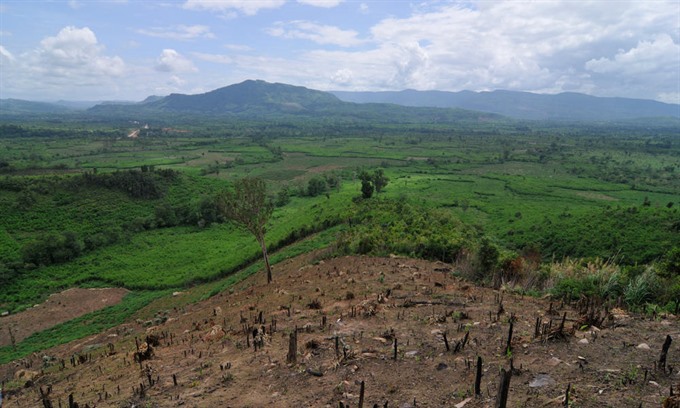 Environment
Environment

Global populations of fish, birds, mammals, amphibians and reptiles may decline by two-thirds by 2020, all within a 50-year period, including iconic species in the Greater Mekong region, such as the Irrawaddy dolphin and tiger, according to the World Wide Fund (WWF) for Nature’s Living Planet Report 2016
 |
| Illustrative photo. Newly-released World Wide Fund (WWF) for Nature’s Living Planet Report 2016 shows that global populations of fish, birds, mammals, amphibians and reptiles may decline by two-thirds by 2020. — VNS File Photo |
HCM CITY — Global populations of fish, birds, mammals, amphibians and reptiles may decline by two-thirds by 2020, all within a 50-year period, including iconic species in the Greater Mekong region, such as the Irrawaddy dolphin and tiger, according to the World Wide Fund (WWF) for Nature’s Living Planet Report 2016 on Monday.
WWF’s report shows how people are overpowering the planet for the first time in Earth’s history. Wildlife species already declined by 58 per cent between 1970 and 2012, the most recent year with available data.
The authors of the report recommend a series of changes in the way society views wildlife, food and energy to reverse the trends.
“Globally, wildlife is disappearing at an alarming rate, and here in the Greater Mekong we are seeing those trends accelerate,” said Stuart Chapman, WWF Greater Mekong Regional Representative.
“Biodiversity is the foundation of healthy forests, rivers and oceans and we are paving the way for ecosystem collapse, along with clean air, water, food and climate services that they provide us.”
Fortunately, there are solutions. In the Greater Mekong, that includes increased enforcement against poaching and illegal logging, trans-boundary cooperation on illegal wildlife trade and landscape protection.
And 2020 holds great promise. In that year, commitments made under the Paris climate deal will kick in, and the first environmental actions under the globe’s new sustainable development plan are due.
If implemented, these measures, along with meeting international biodiversity targets set for 2020, can help achieve the reforms needed in the world’s food and energy systems to protect wildlife across the globe.
The WWF report uses the Living Planet Index, provided by the Zoological Society of London (ZSL), to monitor trends in wildlife abundance. This index reports how wildlife populations have changed in size, rather than the specific number of animals that have been lost or gained.
Evidence of man-made era
The top threats to species identified in the report are directly linked to human activities, including habitat loss, degradation and overexploitation of wildlife.
The report’s findings provide additional evidence that the planet is entering completely unchartered territory in its history in which humanity is shaping changes on Earth, including a possible sixth mass extinction.
Researchers are already calling this period the Anthropocene.
Understanding why we are moving into this new epoch enables us to identify solutions for restoring the ecosystems we depend upon.
According to the report, food production to meet the complex demands of an expanding human population is leading the race in the destruction of habitats and overexploitation of wildlife.
Agriculture occupies about one-third of the Earth’s total land area and accounts for almost 70 per cent of water use.
The Living Planet Report 2016 outlines solutions to reform the way we produce and consume food to help ensure that the world is well fed in a sustainable way.
The report also focuses on the fundamental changes required in the global energy and finance systems to meet the sustainability needs of future generations
“Living Planet Report 2016: Risk and Resilience in a New Era” is the 11th edition of WWF’s biennial flagship publication. The report tracks more than 14,000 vertebrate populations of over 3,700 species from 1970 to 2012. – VNS




